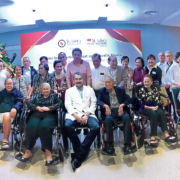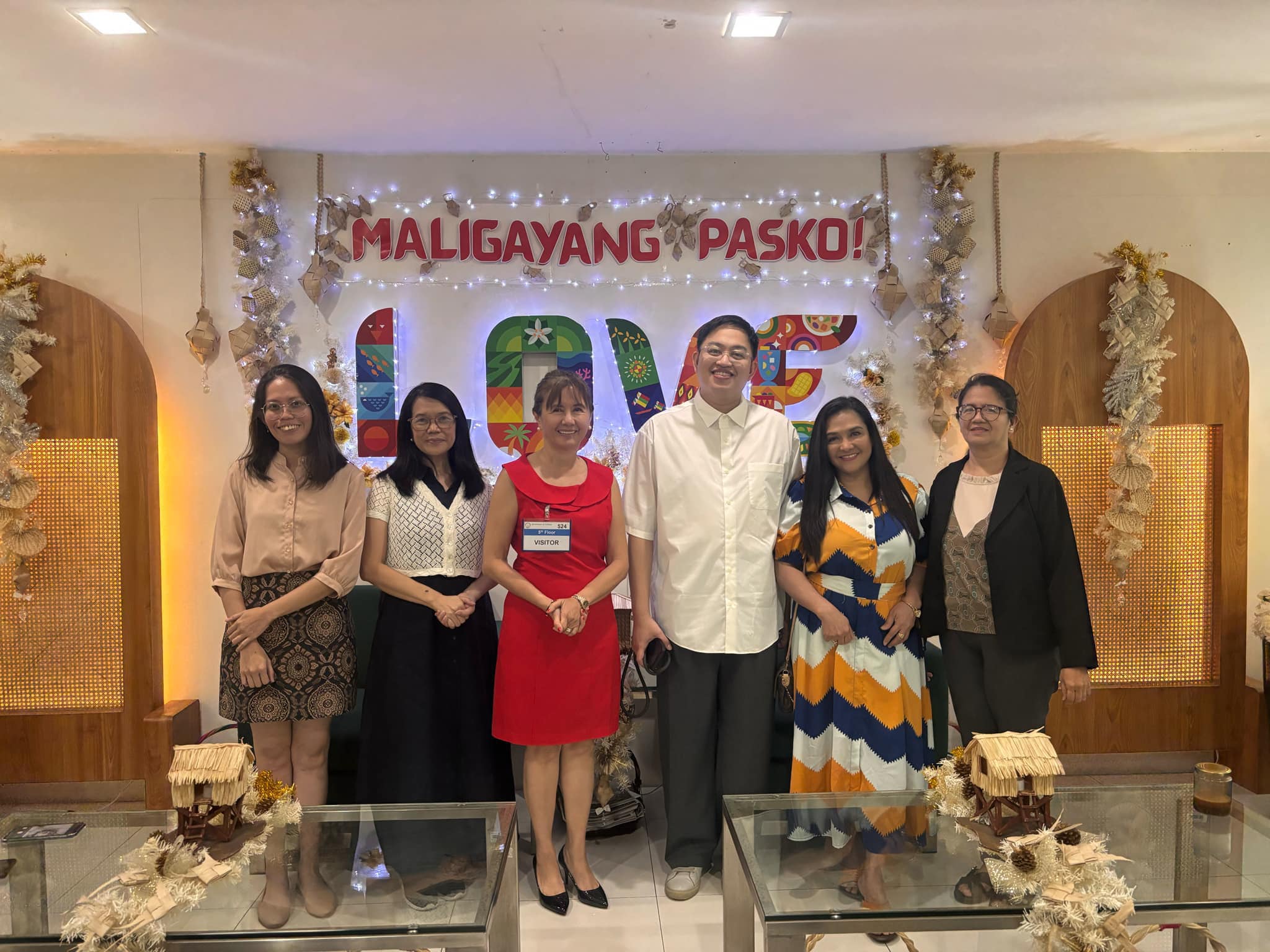
Transcatheter Aortic Valve Replacement Patients Living Longer, Fuller Lives
For Filipinos with serious heart problems, among the local hospitals that come to mind for their treatment is St. Luke’s Medical Center. Recognized worldwide, the hospital’s Heart Institute provides comprehensive cardiac care of the highest quality, ensuring that patients receive the most advanced treatments known to medicine.
Over the last three decades, the Institute has introduced several pioneering, minimally invasive procedures including catheter based aneurysm repair using endografts (endovascular aneurysm repair) in 1999, hybrid repairs of complex aortic vascular diseases, transcatheter aortic valve replacement or TAVR in 2012, transcatheter mitral valve repair using the mitra clip system in 2013 and graft endo fixation, among others.
“In order to successfully perform all these advanced and highly sophisticated procedures, a medical center needs to have dedicated, knowledgeable and skilled multispecialty teams of care; the most sophisticated medical imaging equipment, medical support systems and
optimized hospital systems of care designed to ensure unmatched post-operative care and best possible procedural outcomes,” explains Dr. Fabio Enrique Posas.
As an interventional cardiologist, he heads the newly launched Center for Structural Heart and Vascular Diseases at St. Luke’s-Global City. The center was created with the aim of promoting, pioneering, researching and perfecting technologically advanced, minimally invasive technologies designed to treat structural heart and vascular diseases. It also aims to promote, design and test optimized systems of care as well as comprehensive, multispecialty treatment approaches.
Aortic valve stenosis or narrowing, is a disease process that prevents the aortic valve from opening fully, resulting in the obstruction of blood flow from the heart into the aorta and the rest of the body.
Patients who suffer from aortic valve stenosis (AS) are usually elderly and often have multiple medical problems. Severe AS may manifest as chest pain or tightness; shortness of breath especially on exertion but also while at rest; fatigue; heart failure; fainting spell especially during times of strenuous activity and heart palpitations and irregular heart rhythms (arrhythmias). The onset of symptoms in patients with aortic valve stenosis is ominous as these are commonly associated with increased mortality, worsened quality of life and sudden cardiac death. Lifestyle changes, medicines, and a careful diet do not usually help given the mechanical nature of the disease. Without valve replacement, symptomatic aortic valve stenosis is more deadly than most cancers.
Open heart valve surgery was, until recently, the only option for aortic valve replacement. However, traditional open heart surgery may be tough on the elderly or those who are too ill or weak to survive an open heart procedure. Other patients may not be good surgical candidates due to multiple disease processes/co-morbidites or due to anatomical factors that preclude successful open surgical procedures.
Fortunately, in 2012, a St. Luke’s-Global City team of physicians led by doctors Fabio Enrique Posas and Estanislao De Castro performed the first Philippine TAVR, a catheter technique that allows for the minimally invasive replacement of the diseased aortic valve without the use of heart lung machine, open chest surgery, and, in some patients, even without the need for general anesthesia or surgical cuts.

Passing The 100th Milestone
Five years later, the St. Luke’s TAVR team is celebrating the completion of its 105th TAVR procedure and the launching of the first Philippine transcatheter valve center of excellence. This body of work represents technical proficiency and the largest, single center TAVR experience by a dedicated team of experts in the country.
It in fact represents one of the most extensive single center TAVR experience, and one of the most experienced centers in the Southeast Asia region with outcomes that match those reported from the best centers in the world.
While TAVR was originally tested in non-operable or extra high risk surgical patients, recently published randomized studies led the Unites States Food and Drug Administration to approve TAVR for patients at intermediate, high and extra high risk or inoperable patients.
“For patients who are elderly, not healthy enough for open heart surgery or those who refuse open heart procedures, TAVR represents a highly effective, lifesaving alternative to open heart surgery.
The introduction of TAVR as a valve replacement option at St. Luke’s has already made a difference in countless patient lives. After 105 TAVR procedures, we are proud of the 98 percent procedural success rate which we have been able to achieve despite the complexity of disease and the number of co-morbidities in the patients we treat,” says Dr. Posas.
Best Equipment
To achieve a successful TAVR procedure, the St. Luke’s TAVR team has optimized systems within the cardiac catheterization laboratories, but also requires accurate and clear pre-procedure planning images. “We need to acquire clear and precise images of the valves, its annulus, left ventricle, the coronary arteries and the access vessels. We have the best equipment to do it at significantly less (radiation) dose to the patient and the operating team,” says Dr. Ofelia Najos Valencia, a cardio-imaging expert and the team’s cardiac imaging head.
Optimal imaging using multiple modalities such as CT scans, echocardiography and angiography is integral to the planning and guidance of the procedure. Dr. Valencia states that a complete and comprehensive understanding of the anatomy of the patient as well as the intended transcatheter device and pre-specified delivery access is mandatory.
Optimal imaging strategies also allow the visualization of other organ systems and to rule out previously undiagnosed disease processes which may influence treatment strategies. “Our goal is to provide patient care where technology supports cardiac services and treatment strategies, surgery is less invasive and where imaging delivers real time, actionable information. Advanced imaging systems in the operating room allow our operators to make the best possible decisions even in the most difficult anatomies,” describes Dr. Valencia.
Less Invasive
The TAVR is a minimally invasive procedure which is done, in most cases, via the arteries at the groin. The procedure can be done effectively and rapidly in most patients—average device implantation time at the hospital’s laboratory is 45 minutes—and can be done with 80cc to 100cc of contrast. For patients who are still functional prior to the procedure, recovery is rapid and in-hospital stay post-procedure averages three to four days which compares well to the seven or more days for open heart surgery patients. For patients with multiple, complex, comorbidities or frailty, discharge times may be longer. Randomized controlled trials involving intermediate, high or extra high risk patients have now shown that TAVR is either superior or non-inferior to standard open valve surgery.
The TAVR patients do as well as open heart valve replacement patients at midterm follow up. As a result, the US FDA has approved TAVR for such patients. Ongoing updates of guideline recommendations are likely to classify TAVR as class Ia recommendation for such patients (TAVR can be used instead of surgical valve replacement for patients at intermediate or high risk for surgical valve replacement).
“Whereas eligible TAVR patients would have previously had to fly out of the country in order to undergo the procedure, that is no longer necessary. We have the experience and expertise to perform TAVR here with outcomes that are comparable or better that those reported from the best centers in the world. The TAVR program at St. Luke’s is unrivalled in the Philippines as far as experience and volume. In fact, it is currently regarded as one of the largest, most advanced and most successful programs in Southeast Asia,” describes Dr. Ferdinand Alzate, an interventional cardiologist and member of the TAVR team.
Alzate relates that the St. Luke’s team has been mentored by world-renowned innovators and inventors of the TAVR technique. “Through the personal tutelage and supervision of highly-acclaimed, world renowned TAVR operators and structural heart disease specialists such as French TAVR inventor Dr. Jean Claude Labourde and Dr. Eberhar Grube, our team easily honed and perfected the technique from the maestros themselves. Dr. Posas is now one of the few Southeast Asia international certified proctors (teacher) for the TAVR procedure and the only one in the Philippines,” adds Dr. Alzate.
Dr. Dahlia Estrera, the team’s cardiovascular anesthesiologist, adds that when patients are made aware that valve replacement can be done in an equally safe manner with minimally invasive options like TAVR, they often choose the less invasive option.
“The increasing burden of chronic diseases and older patients who often have multiple concurrent diseases/comorbidities have increased the need for new, innovative and minimally invasive technologies and the creation of dedicated teams and centers of excellence. With the advent of TAVR procedures successfully performed at St. Luke’s, there will be no need to travel abroad or to incur unnecessary costs transferring from one hospital to another,” says Estrera.

Future
Over the last 100 years, cardiovascular disease (CVD) has shifted from a relatively inconsequential disease to a leading cause of morbidity and mortality in the world. At the beginning of the 20th century, CVD accounted for less than 10 percent of all deaths worldwide.
Today, however, CVD claims an estimated 17.7 million people, representing 31 percent of all global deaths. By 2020 or three years from now, it will claim 25 million deaths each year, becoming the world’s leading cause of death and disability.
The St. Luke’s Center for Structural Heart and Vascular Diseases in general aims to optimize medical delivery systems designed to improve the outcomes and accelerate the introduction and adoption of new and beneficial technologies. Using quality controlled processes of care, the Center seeks to make a dent in the rising number CVD deaths and disability associated with such diseases while minimizing the invasiveness of life saving technologies and treatments.
“Most patients until recently were limited to open surgery, or worse, to not be operated at all because of the potential risks. At the Center for Structural Heart and Vascular Diseases, we aim to find solutions to complex medical problems and to harness the most advanced and effective technologies available at the best centers in the world. We not only offer hope, but also give a glimpse of the future, of what we can successfully accomplish in the field of structural heart and vascular diseases,” says Dr. Posas.






What is the cost for the procedure. I have a severe with aortic valve area of 0.75cm2 by continuty equation and peak gradient of 62.84mmHg.